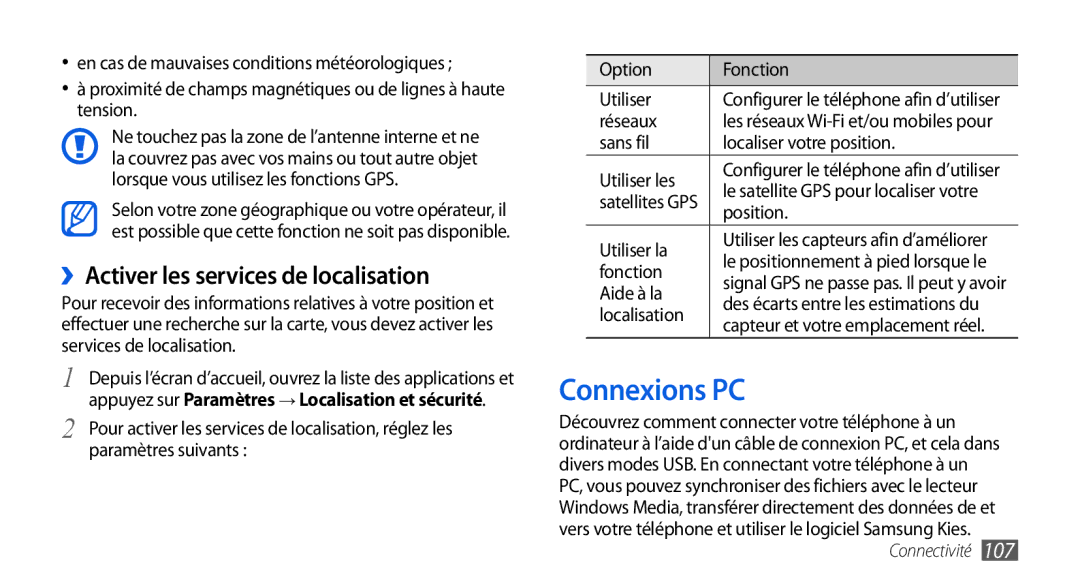GT-I9001HKDFTM, GT-I9001HKDBOG, GT-I9001UWDSFR, GT-I9001RWDFTM, GT-I9001RWDSFR specifications
The Samsung GT-I9001, also known as Samsung Galaxy S II, is a smartphone that made waves in the mobile market when it was first released in 2011. Variants such as GT-I9001HKDXEF, GT-I9001HKDBOG, GT-I9001HKDFTM, and GT-I9001HKDSFR showcase the device's adaptability to different markets and network compatibility.The Galaxy S II boasts a 4.3-inch Super AMOLED Plus display, offering vibrant colors and deep blacks that enhance the user experience for media consumption and gaming. The screen resolution of 480 x 800 pixels provides clarity, while the Corning Gorilla Glass ensures durability against scratches and minor impact.
Under the hood, the device is powered by a dual-core 1.2 GHz Cortex-A9 processor, paired with a Mali-400MP GPU. This combination delivers smooth performance, allowing users to multitask and run demanding applications without significant lag. Coupled with the Android operating system, initially launched with Gingerbread and later upgradable to Jelly Bean, the Galaxy S II offers a user-friendly interface and access to a plethora of apps via the Google Play Store.
With regards to memory, it typically comes with 1GB of RAM and offers storage options of 16GB or 32GB, expandable via microSD card up to 64GB. This ample storage capacity makes it suitable for storing photos, music, and videos, catering to users who enjoy multimedia content.
The handset features an 8-megapixel rear camera with LED flash, capable of capturing high-quality images and recording videos at 1080p. The front-facing camera, although modest at 2 megapixels, supports video calls and captures selfies, fulfilling the basic social media needs of users.
Connectivity options include Wi-Fi 802.11 b/g/n, Bluetooth 3.0, and GPS, ensuring that users stay connected and can share their experiences easily. The device also supports HSPA and various network standards, making it versatile for global travelers.
With its sleek design, impressive features, and innovative technologies, the Samsung GT-I9001 series stands out as a significant milestone in the evolution of smartphones, marking the shift towards powerful, user-centric mobile devices that cater to a wide range of consumers.
